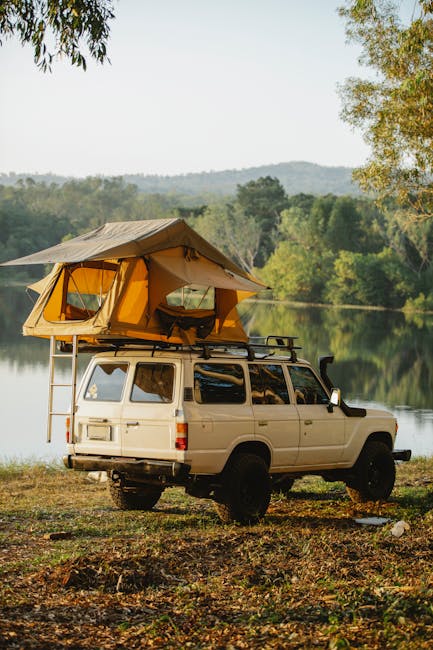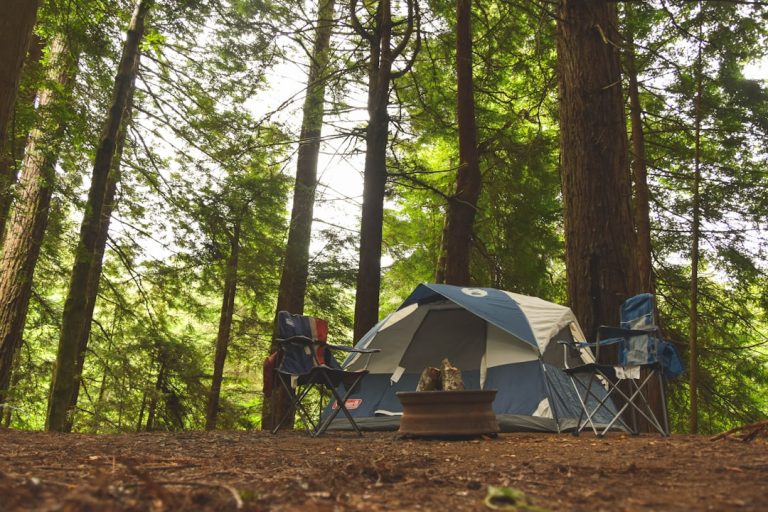Thinking about ditching the tent and sleeping in your car on your next camping trip? Car camping is a super convenient way to enjoy the outdoors without all the fuss of pitching a tent. It’s also a great option if the weather looks iffy, or if you just want a little extra comfort. This guide will walk you through everything you need to know to make your first car camping adventure a success!

What is Car Camping?
Car camping is exactly what it sounds like: camping in your car! Instead of setting up a tent, you sleep inside your vehicle. This could be a car, SUV, van, or even a truck with a camper shell. Car camping offers a few advantages over traditional tent camping. It’s quicker to set up, provides more protection from the elements, and often feels more secure. Plus, you have all your gear easily accessible right inside your “mobile basecamp.”
Is Car Camping Right for You?
Before you pack up your car and head to the campground, consider if car camping is a good fit for you. Do you value convenience and ease of setup? Are you okay with a smaller sleeping space? Are you looking for a way to camp in colder or wetter weather? If you answered yes to these questions, car camping might be perfect for you. However, if you crave a large, open sleeping area and prefer a more rustic experience, tent camping might be a better choice.
Choosing the Right Vehicle
The best vehicle for car camping depends on your needs and preferences. SUVs, minivans, and wagons generally offer the most space for sleeping and storing gear. Sedans can work too, but you’ll likely have less room and might need to get creative with your setup. Consider the length of your sleeping area. Can you comfortably stretch out in the back with the seats folded down? If not, you might need to build a platform to create a level sleeping surface. Also, think about storage. Do you have enough room for all your camping gear, or will you need a roof rack or cargo carrier?
Finding the Perfect Campsite
Not all campsites are created equal when it comes to car camping. Look for a relatively level parking spot to ensure a comfortable night’s sleep. Some campgrounds have designated car camping spots, while others allow you to park in any available site. Check the campground’s rules and regulations before you arrive. Pay attention to the surrounding environment. Is there shade to keep your car cool during the day? Is the site close to restrooms and water sources? Also, be mindful of noise levels. Some campgrounds can be busy and noisy, especially on weekends.
Essential Car Camping Gear
While you won’t need a tent, there are still some essential items you’ll need for a comfortable car camping trip:
- Sleeping bag and pillow: Choose a sleeping bag that’s rated for the temperatures you expect to encounter.
- Sleeping pad: This will provide cushioning and insulation from the cold floor of your car.
- Window coverings: These will provide privacy and block out light. You can use reflectix, cardboard, or even fabric.
- Headlamp or flashlight: Essential for navigating around the campsite at night.
- Camp chairs: For relaxing outside your car.
- Camp table: For cooking and eating meals.
- Cooking stove and cookware: If you plan on cooking your own food.
- Food and water: Pack plenty of non-perishable food and water.
- First-aid kit: In case of minor injuries.
- Trash bags: To pack out all your trash.
Setting Up Your Car for Sleeping
Transforming your car into a comfortable sleeping space is key to a successful car camping trip. Start by cleaning out your car and removing any unnecessary items. Fold down the back seats to create a flat surface. If there’s a gap between the seats and the trunk, fill it with pillows or blankets to create a more even sleeping area. Place your sleeping pad on top of the folded seats, followed by your sleeping bag and pillow. Install your window coverings for privacy and to block out light. Consider using a car camping air mattress for extra comfort. These mattresses are designed to fit perfectly in the back of most cars and SUVs.
Ventilation and Airflow
Proper ventilation is crucial for a comfortable and safe car camping experience. Condensation can build up inside your car overnight, making it damp and uncomfortable. To prevent this, crack your windows slightly to allow for airflow. You can also use window vent guards to keep rain and bugs out. Another option is to use a small fan to circulate air inside your car. Just make sure it’s battery-powered or can be plugged into your car’s cigarette lighter.
Staying Warm and Comfortable
Car camping can be surprisingly cold, even in the summer. Be prepared for chilly nights by bringing extra layers of clothing, such as thermal underwear, fleece jackets, and warm socks. A hat and gloves can also make a big difference. Use a sleeping bag that’s rated for colder temperatures than you expect to encounter. You can also add a sleeping bag liner for extra warmth. Consider using a portable heater to warm up your car before going to bed, but be sure to follow all safety precautions and never leave it running unattended.
Cooking and Eating at Your Campsite
One of the best parts of camping is cooking and eating outdoors. If you plan on cooking your own meals, bring a portable camping stove, cookware, and utensils. Choose simple recipes that are easy to prepare at the campsite. Pack non-perishable food items that don’t require refrigeration. Consider using a cooler to keep perishable items cold. Be sure to follow all campground rules regarding food storage and disposal to avoid attracting animals. Always cook and eat at least 200 feet away from your sleeping area to minimize the risk of attracting wildlife.
Safety Tips for Car Camping
Car camping is generally safe, but there are a few things to keep in mind:
- Choose a safe campsite: Avoid parking in areas prone to flooding or landslides.
- Be aware of your surroundings: Pay attention to the weather forecast and any potential hazards, such as wildlife or falling trees.
- Lock your doors at night: This will provide extra security and peace of mind.
- Keep valuables out of sight: Don’t leave expensive items visible inside your car.
- Tell someone your plans: Let a friend or family member know where you’re going and when you expect to be back.
- Be prepared for emergencies: Carry a first-aid kit, a cell phone, and a means of communication in case of an emergency.
Leave No Trace Principles
It’s important to practice Leave No Trace principles when car camping to minimize your impact on the environment. Pack out all your trash, dispose of waste properly, and leave the campsite as you found it. Stay on designated trails and avoid damaging vegetation. Be respectful of wildlife and keep your distance. By following these principles, you can help preserve the beauty of the outdoors for future generations.
Frequently Asked Questions
Is car camping allowed everywhere?
No, car camping is not allowed everywhere. You need to camp in designated campgrounds or areas where camping is permitted. Check with the local land management agency (like the National Park Service or Forest Service) to find out the rules and regulations for the area you plan to visit.
How do I deal with bugs while car camping?
Bugs can be a nuisance while car camping. Use insect repellent to protect yourself from bites. Consider using mosquito netting over your windows to keep bugs out of your car. You can also use citronella candles or torches to repel mosquitoes around your campsite.
What if my car battery dies?
It’s a good idea to carry jumper cables and know how to jump-start your car. You can also bring a portable jump starter, which is a self-contained battery pack that can jump-start your car without needing another vehicle. Avoid running your car’s accessories (like the radio or lights) for extended periods while the engine is off to conserve battery power.
How do I find car camping locations?
There are many resources available to help you find car camping locations. Websites like Recreation.gov, Hipcamp, and Freecampsites.net provide information on campgrounds, dispersed camping areas, and other camping opportunities. You can also check with local land management agencies for information on camping in their areas.
Car camping is a fantastic way to experience the outdoors with a bit more comfort and convenience. With a little planning and preparation, you can turn your car into a cozy and functional campsite. So, gather your gear, choose your destination, and get ready for an unforgettable car camping adventure!






